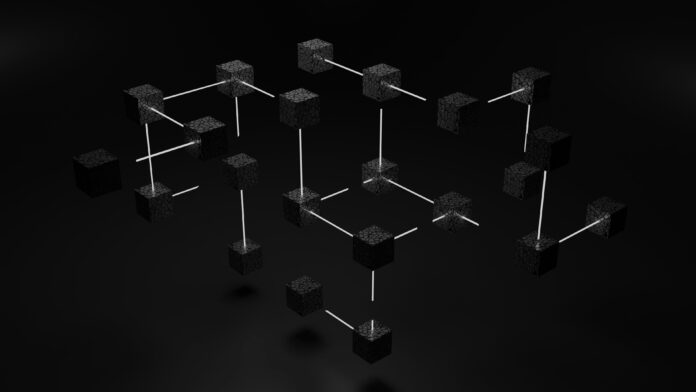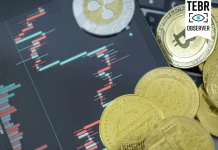
When most people hear the word “blockchain,” their minds immediately go to Bitcoin, Ethereum, or any of the thousands of cryptocurrencies that have sprouted up in recent years.
While digital coins were the first and most prominent use case of blockchain technology, the future of blockchain promises so much more. Innovations are happening rapidly, and they go far beyond just financial transactions.
In this article, we’ll explore some of the exciting directions blockchain is heading, including decentralized applications (dApps), supply chain management, digital identity, and more.
Blockchain as a Foundation for Decentralized Applications (dApps)
One of the most significant innovations in blockchain technology is its use as the backbone for decentralized applications, or dApps. These are applications that run on a decentralized network rather than being controlled by a single entity, offering greater transparency, security, and resilience against censorship.
Ethereum, one of the biggest blockchain platforms, has been at the forefront of this movement, providing developers with tools to create smart contracts and dApps.
But Ethereum isn’t the only player—many other platforms like Polkadot, Solana, and Avalanche are emerging with faster, more scalable solutions.
What makes dApps so revolutionary is their potential to disrupt numerous industries. Think about decentralized finance (DeFi), where financial services like lending, borrowing, and trading are conducted without intermediaries.
DeFi is just one slice of what’s possible. In the future, we could see decentralized versions of social media platforms, marketplaces, and even governments.
The Rise of Nodes and Decentralized Networks
At the heart of all these innovations are nodes, the devices that maintain and validate blockchain networks. As blockchain evolves, more decentralized networks will emerge, and with that comes the opportunity for individuals to contribute to these ecosystems.
One trend we’re seeing is the rise of “node downloads” becoming more accessible. Running a node on a blockchain network used to be a highly technical process, but today, platforms are making it easier for everyday users to participate.
By downloading a node and contributing computing power, users can help secure the network and even earn rewards in the form of tokens.
The decentralization of networks ensures that no single entity has control, preserving the core values of blockchain—transparency, security, and trust.
The Role of Smart Contracts in Automation
Closely tied to dApps is the concept of smart contracts. A smart contract is a self-executing contract with the terms of the agreement directly written into code. These contracts automatically execute and enforce themselves when certain conditions are met, removing the need for intermediaries.
Take insurance, for example. Rather than going through a lengthy process with an insurance company, a smart contract could automatically release funds to a customer if predetermined conditions (like flight delays or medical records) are met.
It’s a streamlined, trustless way to handle agreements, which could revolutionize industries like real estate, law, and healthcare.
Smart contracts also hold great promise for businesses looking to automate processes. By integrating blockchain with existing systems, companies can reduce paperwork, eliminate fraud, and speed up transactions.
While still in its early stages, the potential for automation through blockchain is enormous.
Supply Chain Management and Transparency
Blockchain’s promise doesn’t stop at digital assets or automation. One of the most practical and immediately impactful uses of blockchain technology lies in supply chain management.
In a globalized world where products move across multiple borders, it’s increasingly important to know where goods come from, how they were produced, and if they meet certain standards.
Blockchain can provide an immutable, transparent record of a product’s journey from raw material to consumer. For example, luxury goods, pharmaceuticals, and even food can be tracked to ensure authenticity and safety.
Companies like IBM’s Food Trust blockchain are already using this technology to trace food from farm to table, helping to quickly identify sources of contamination or fraud.
In the future, it’s likely that more industries will adopt blockchain to increase transparency and trust. Imagine buying a product and being able to scan a code that shows you the entire history of that item, from production to purchase. Blockchain makes that possible.
Digital Identity: Secure and Private
Another fascinating area where blockchain is making strides is in digital identity. With increasing concerns about privacy and security in the digital world, blockchain offers a way to create self-sovereign identities—digital identities that individuals control themselves without relying on a third party.
Using blockchain, users can securely store and share personal information with trusted parties without the need for centralized databases.
This means you could verify your identity online without handing over unnecessary personal data to companies, significantly reducing the risk of hacks and identity theft.
In the future, blockchain could allow us to control our own digital identities for voting, healthcare, or even accessing government services. Projects like uPort and Sovrin are already working on solutions that could revolutionize the way we manage personal data.
Interoperability and Cross-Chain Solutions
As more blockchain platforms emerge, a key challenge is ensuring they can interact with one another. This is where blockchain interoperability comes in—allowing different blockchains to communicate and share information.
Several projects are working on cross-chain solutions that would enable assets and data to move freely between blockchains. Polkadot, for example, is building a multi-chain framework that allows for seamless communication between different blockchain ecosystems.
This could open up entirely new possibilities, from more efficient decentralized exchanges to collaborations between projects that previously couldn’t interact.
With increased interoperability, the blockchain space becomes more unified, breaking down the silos that currently limit its full potential.
The Future is Decentralized
As blockchain continues to evolve, its applications will stretch far beyond digital coins. We’re moving towards a world where decentralized systems reshape industries, enhance transparency, and empower individuals.
Whether you’re running a node or simply engaging with decentralized apps, one thing is clear: blockchain is here to stay, and its impact is only beginning. The future is decentralized, and it’s unfolding faster than we might think.
Disclaimer: This article contains sponsored marketing content. It is intended for promotional purposes and should not be considered as an endorsement or recommendation by our website. Readers are encouraged to conduct their own research and exercise their own judgment before making any decisions based on the information provided in this article.








